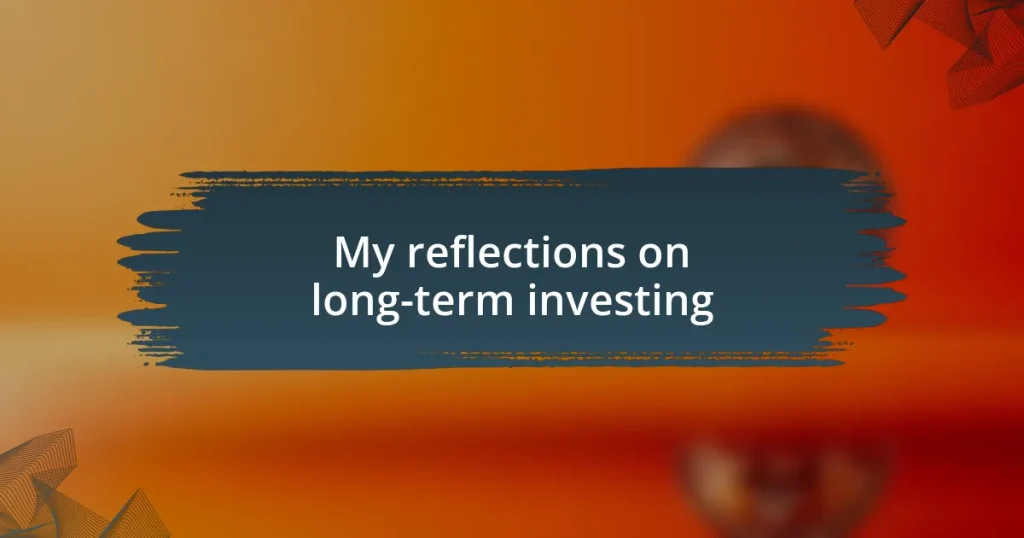Key takeaways:
- Long-term investing requires patience, discipline, and understanding of personal risk tolerance to navigate market fluctuations effectively.
- Benefits of long-term strategies include compounding growth, reduced costs, better decision-making, tax advantages, and emotional resilience.
- Diversifying across asset classes and geographic regions, along with periodic portfolio reassessment, enhances investment resilience and alignment with financial goals.
- Prioritizing investments in companies with strong ESG practices and focusing on long-term trends can lead to sustainable growth and better alignment with personal values.
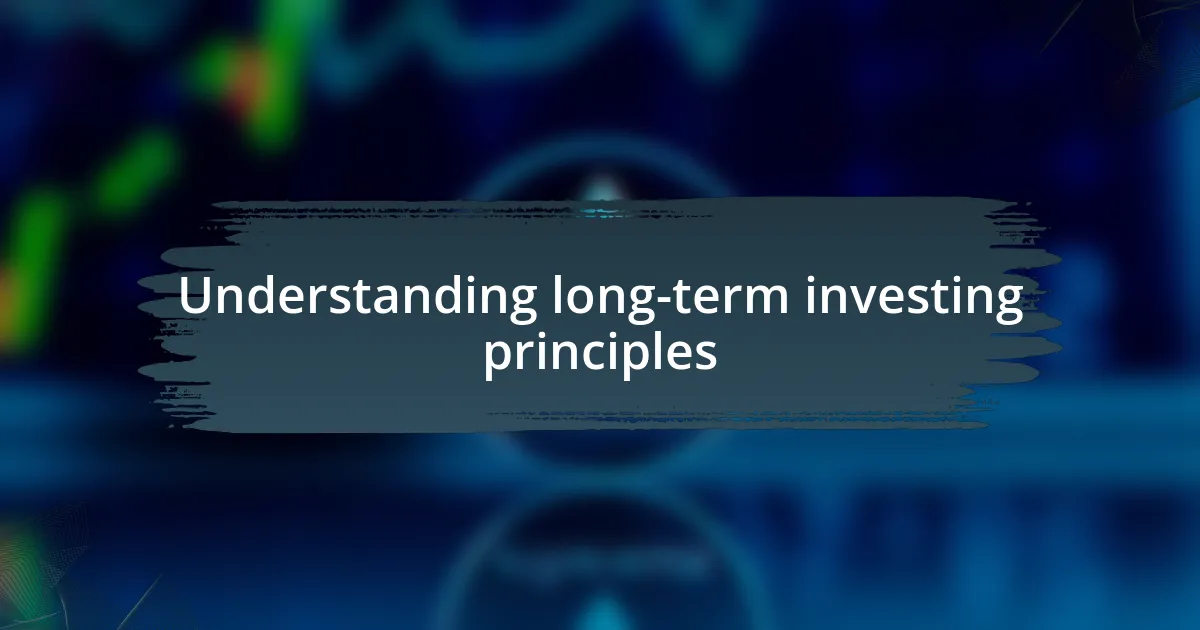
Understanding long-term investing principles
Long-term investing is fundamentally about patience and discipline. I remember when I first dipped my toes into this world; it felt overwhelming to navigate the market’s ups and downs. But with time, I realized that true success comes from staying the course and not letting short-term volatility derail your plans.
A key principle that stands out to me is the power of compounding. Just think about it: every dollar you invest can potentially grow exponentially over time. I often reflect on how I wish I had started investing earlier, as those early contributions could have blossomed into significant returns today. Have you ever considered how even small, regular investments can lead to incredible wealth down the line?
Moreover, understanding your risk tolerance is crucial in long-term investing. When I first faced market fluctuations, my emotions ran high, and I questioned my decisions constantly. Gradually, I learned that recognizing my own comfort levels helped me make more informed choices, ultimately leading to more confidence in my investment journey. How do you assess your feelings when the market dips?
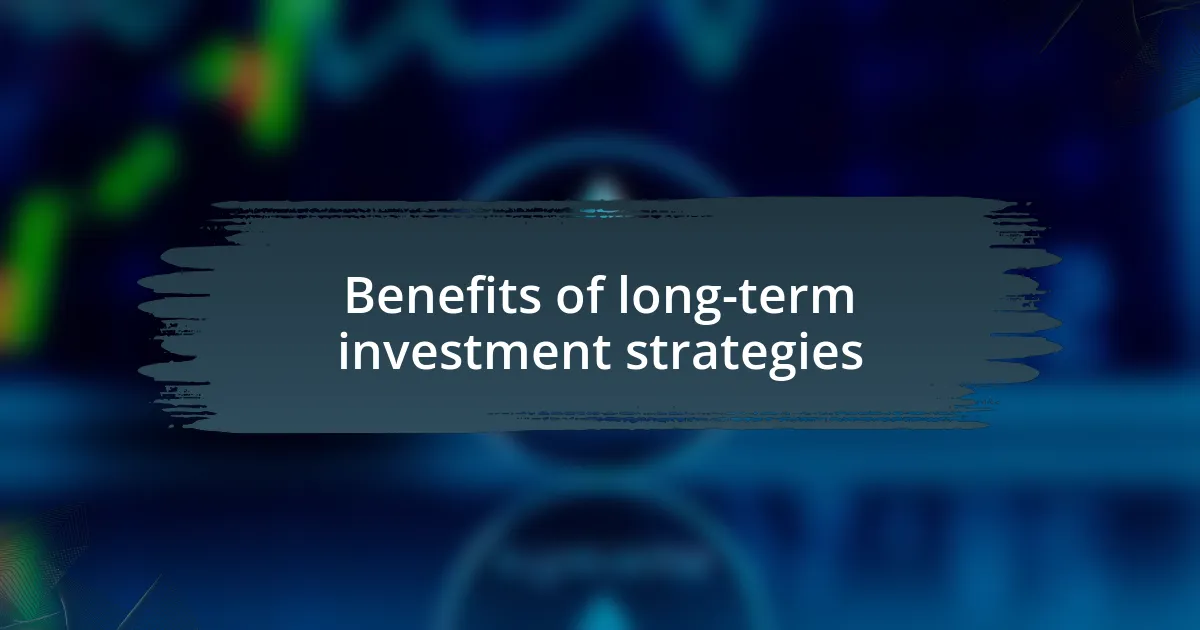
Benefits of long-term investment strategies
The benefits of long-term investment strategies are profound and often underestimated. One of the most significant advantages I’ve experienced is the reduction of stress associated with market volatility. When I shifted my focus from daily stock price fluctuations to a broader time horizon, I found a sense of peace. It allowed me to appreciate the long-term potential of my investments rather than worry incessantly about short-term losses.
Some key benefits I’ve witnessed include:
- Compounding Growth: Reinvesting earnings can yield higher returns over time, amplifying wealth beyond initial investments.
- Lower Costs: Long-term investing often means fewer transaction fees and taxes, enhancing overall profitability.
- Better Decision Making: A long-term perspective encourages thoughtful investment choices, rather than hasty reactions to market changes.
- Tax Advantages: Holding investments for longer periods may qualify for lower capital gains tax rates.
- Emotional Resilience: Cultivating patience and a steady approach fosters confidence and reduces anxiety during market downturns.
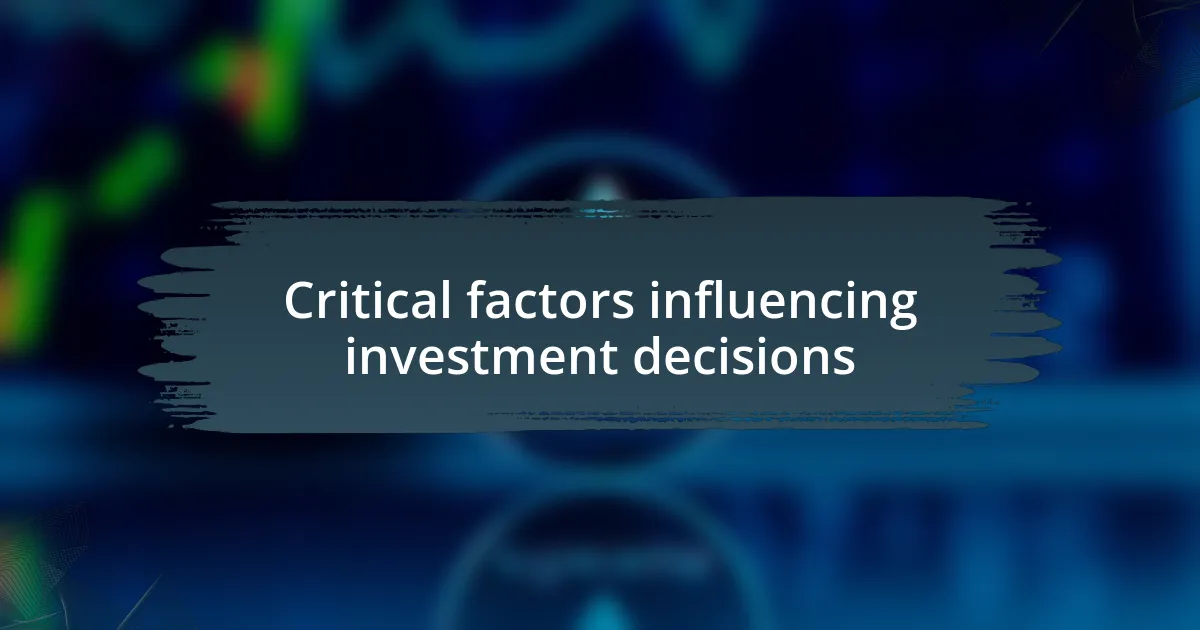
Critical factors influencing investment decisions
When it comes to investment decisions, personal risk tolerance is a critical factor. I remember early in my investing journey, feeling anxious before making trades because I wasn’t sure how much risk I was willing to take on. Understanding my own comfort level with risk helped me make more informed choices, allowing me to invest in a way that aligned with my financial goals without causing unnecessary stress.
Market trends and economic indicators also play a vital role in shaping investment strategies. I often pay close attention to financial news and reports, which have sometimes guided my decisions. For instance, when I noticed a consistent rise in tech sector performance, I felt more confident allocating a portion of my portfolio towards tech stocks, which ultimately paid off.
Social influences, including advice from friends, family, and financial advisors, can impact investment choices significantly. Early on, I turned to a mentor who had a solid grasp of the stock market. Their insights shaped my approach and taught me the value of learning from diverse perspectives, which is crucial for making well-rounded investment decisions.
| Critical Factor | Description |
|---|---|
| Risk Tolerance | Your personal comfort level with the potential loss of investments. |
| Market Trends | Patterns and behaviors observed in the financial markets over time. |
| Social Influences | Advice and perspectives from others that may sway your investment choices. |
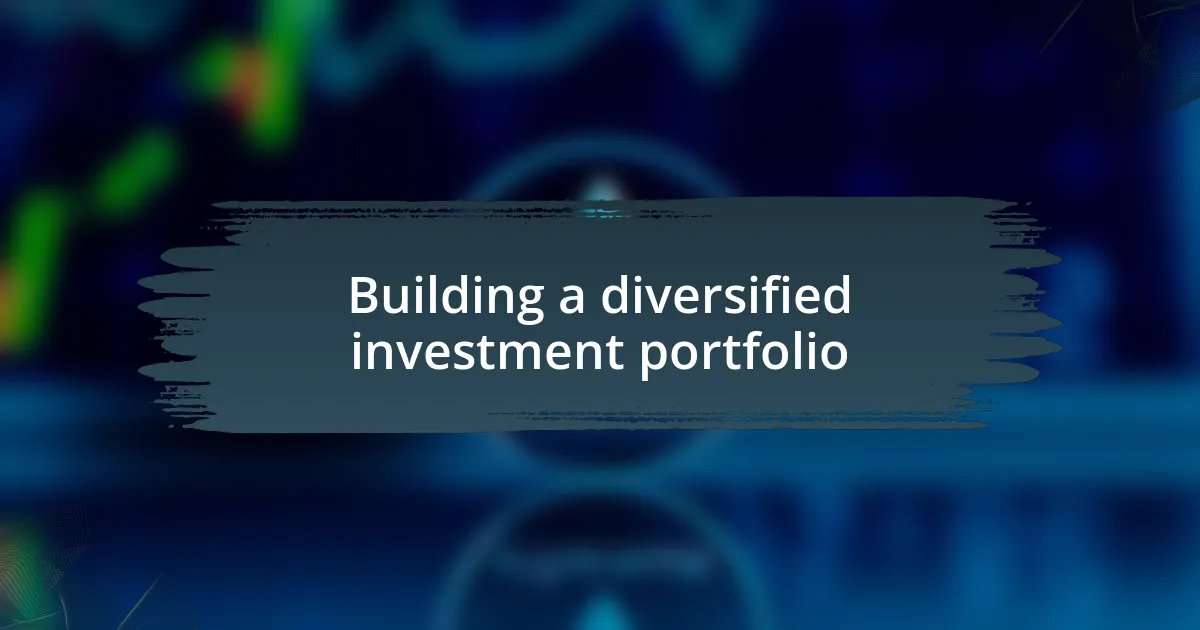
Building a diversified investment portfolio
To build a diversified investment portfolio, I believe it’s essential to spread your investments across various asset classes, such as stocks, bonds, and real estate. I recall my first experience with diversification; I initially placed all my funds into a single stock, which felt thrilling at first. However, when the stock plunged due to unforeseen market shifts, my heart sank – a powerful lesson in the importance of not putting all my eggs in one basket.
In my journey, I found that geographic diversification can also enhance a portfolio’s resilience. For instance, investing in international markets supplemented my domestic holdings, giving me access to growth opportunities in emerging economies. Reflecting on this, I realized that it’s about seeking balance and ensuring that if one area experiences volatility, others might not be as heavily impacted.
Lastly, I often think about the importance of reassessing my portfolio periodically. I remember a time when I neglected this step and missed signs that certain sectors were becoming overvalued. Consistently reviewing my investments not only helps me stay aligned with my financial goals but also keeps my portfolio robust against changing market conditions. How often do you reflect on your investment choices? It’s a practice that can truly make a difference.
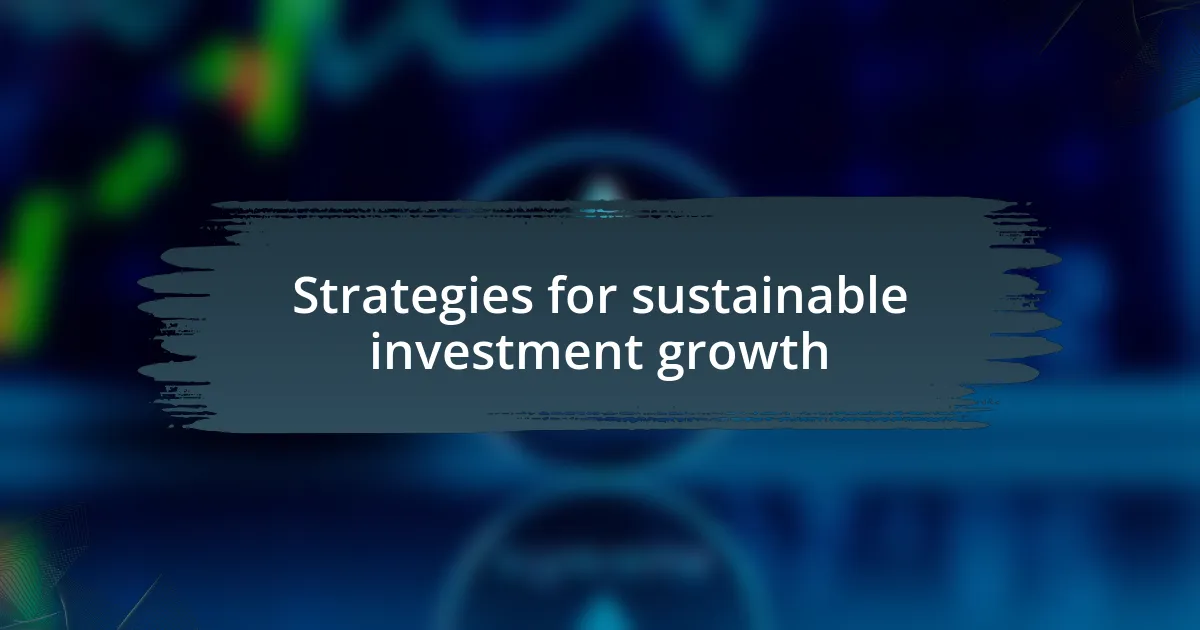
Strategies for sustainable investment growth
When considering strategies for sustainable investment growth, I find that prioritizing companies with strong environmental, social, and governance (ESG) practices can be incredibly rewarding. I remember when I pivoted my portfolio to include more socially responsible investments. Although I initially thought it might limit my options, I was pleasantly surprised to see that many of these companies not only aligned with my values but also demonstrated impressive growth rates. Have you ever experienced that moment when your investments not only reflect your beliefs but also perform well?
Another critical strategy I embrace is focusing on long-term trends rather than chasing short-term gains. I still recall the excitement I felt during a bull market when prices were skyrocketing. However, that exhilaration faded when the inevitable market correction hit. Shifting my perspective to consider innovations like renewable energy and technology advancements has helped me identify opportunities that are likely to grow sustainably over time. It’s about asking ourselves: what is the future heading towards, and how can we be part of that journey?
Finally, maintaining a disciplined approach to investing is vital for sustainable growth. There was a time when I impulsively reacted to market fluctuations, leading to more losses than gains. Now, I remind myself to stick to my strategy and remain patient, even when the markets look volatile. How do you handle moments of uncertainty? I’ve learned that the market will always have ups and downs, but my commitment to a well-thought-out long-term strategy makes all the difference.











